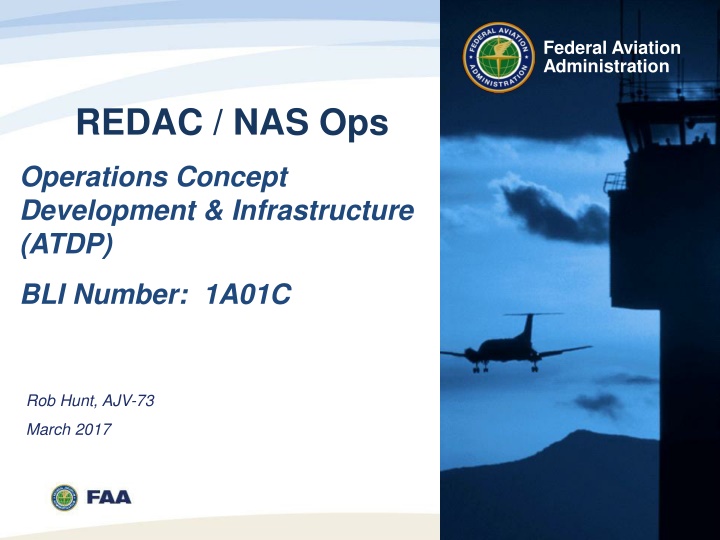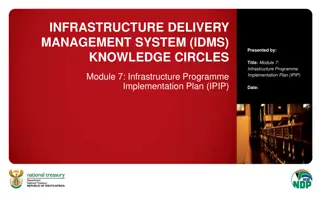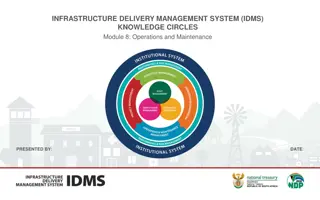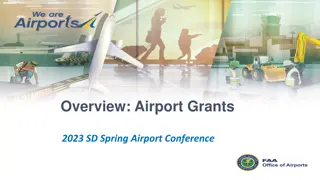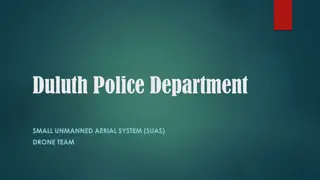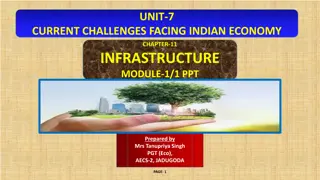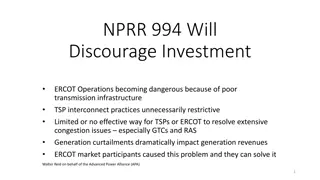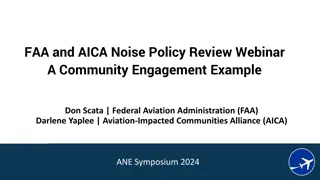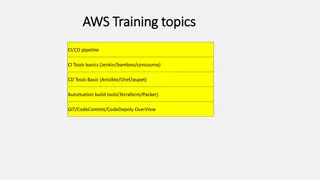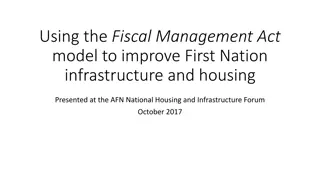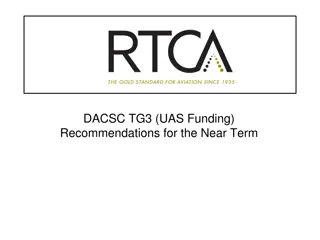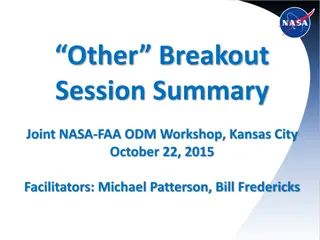FAA Operations Concept Development & Infrastructure
The Federal Aviation Administration (FAA) is modernizing the National Airspace System (NAS) based on the NextGen Operational Concept for 2025. This program focuses on concept development, validation, and infrastructure enhancements to meet future requirements and goals. It assesses changing roles and responsibilities, airspace changes, procedural modifications, and the implementation of new systems for information distribution. Success is determined by accomplishing multi-year goals to support increased capacity, efficiency, safety, and performance in air traffic management.
Download Presentation

Please find below an Image/Link to download the presentation.
The content on the website is provided AS IS for your information and personal use only. It may not be sold, licensed, or shared on other websites without obtaining consent from the author.If you encounter any issues during the download, it is possible that the publisher has removed the file from their server.
You are allowed to download the files provided on this website for personal or commercial use, subject to the condition that they are used lawfully. All files are the property of their respective owners.
The content on the website is provided AS IS for your information and personal use only. It may not be sold, licensed, or shared on other websites without obtaining consent from the author.
E N D
Presentation Transcript
Federal Aviation Administration REDAC / NAS Ops Operations Concept Development & Infrastructure (ATDP) BLI Number: 1A01C Rob Hunt, AJV-73 March 2017
Operations Concept Development & Infrastructure - ATDP Why is this program necessary? The FAA is proceeding with NAS modernization based on the NextGen Operational Concept for 2025. Concept development and validation is necessary to investigate specific concept elements, and to drive out operational and technical requirements and implications for human factors, training and procedures. This program assesses the interaction of changing roles and responsibilities of NAS service providers and pilots, airspace changes, procedural changes and new mechanized systems for distributing weather, traffic and other flight related information. It tests the assumptions behind common situational awareness and distributed information processing. The program uses analyses and associated white papers to validate whether future system requirements meet NextGen goals, including the flight data processing evolution in En Route Automation Modernization (ERAM), data communications, the future voice switch, changes in surveillance requirements and associated procedures, establishment of new roles and responsibilities to support increased productivity, etc. It will develop methods, metrics, and models to demonstrate that the modernized system can handle anticipated growth in traffic demand according to the Terminal Area Forecasts (TAF) for incremental years. This supports the goal of continued US leadership internationally and helps ensure the global harmonization through continued support for the ICAO Global ATM operational concept, the development of global requirements, and the definition of an air transportation performance framework.
Operations Concept Development & Infrastructure - ATDP What are the benefits to the FAA The activity supports the FAA s Strategic Initiatives by delivering benefits through technology and infrastructure; Concept validation supports development, analysis, and simulation of new concepts to assess requirements and to evaluate the impact of the concept on system capacity, efficiency, safety and human performance. Evaluation criteria include the following: Impact/Improvement to Air Traffic Service Providers, airspace users, and automation that could increase capacity, Impact/Improvement on airspace structure which may increase productivity and hence capacity, Impact/Improvement on communication, navigation, and surveillance (CNS) requirements to support the FAA's efforts to reducing cost, increasing capacity and efficiency and; Impact/Improvement on automation, display, and facility configuration elements to increase productivity and hence capacity. What determines program success Success is measured by the completion of the goals identified in multi-year plans developed for each activity. Initiatives that successfully complete all the project goals identified are then presented as candidates for acquisition. 3
Operations Concept Development & Infrastructure ATDP / BLI Number: 1A01C Overview Capabilities People: Program Manager: Rob Hunt Subject Matter Experts: Traffic Managers, ATC, Discipline Experts, Airspace User Community Research Partners: ANG, NASA, Mitre, Lincoln Labs, Volpe, Academia Laboratories: MITRE Tech Center DAB Test Bed NASA Volpe 4
Research Focus Areas Graphic Not to Scale PBN and Time, Speed, Spacing Tools Optimization Freeze Horizon Distances are notional and 550 NM will vary by location * Indicates capability is fielded PBN Procedures: Optimizes design of airspace and STAR procedures to enable more efficient arrival operations. Objectives: Expand the efficient use of PBN procedures in the NAS (leveraging the PBN NAV Strategy) and apply time, speed, spacing tools to achieve operational goals 300-280 NM Datacomm when/where available Top of Descent 160-140 NM XMP CMP Meter Point Extended Metering: Greater range for distribution of delay (expands solution horizon) for arrivals Merge Point 40 NM Potential Activities: Concept engineering activities (to include ATDs) designed to mature the tools necessary to enable the PBN NAV Strategy and achieve throughput, flight efficiency, safety, and other enterprise-level benefits XMP near FAF Terminal Metering Arrival Metering* Extended Metering* Coupled Scheduling* TRACON Boundary Terminal Sequence and Spacing Tools: Metering in the TRACON and provides Controller Managed Spacing tools. Path Stretch: Closed-Loop lateral maneuver to absorb delays Ground Interval Management: Speed advisories to achieve meet-time at meter fixes. Ground-based Flight Deck-based 5
Research Focus Areas Cross-Capability Integration Analysis Objective: Continued examination of possible cross-capability integration issues as emerging concepts evolve and new concepts are planned for the mid-term Potential Activities: Scenario development/update/execution, mitigation recommendations (e.g. further research, reqs) *RTCA Support Continued support of international standards and public/private collaboration Data Comm CTOP Adjacent Center Metering Airborne Reroutes Speed Control RNAV / RNP OAPM Extended Metering TSAS IDAC Pre-Departure Reroutes CRDA ATPA Wake CSPO Coupled Scheduling 6 Departure Scheduling 6
